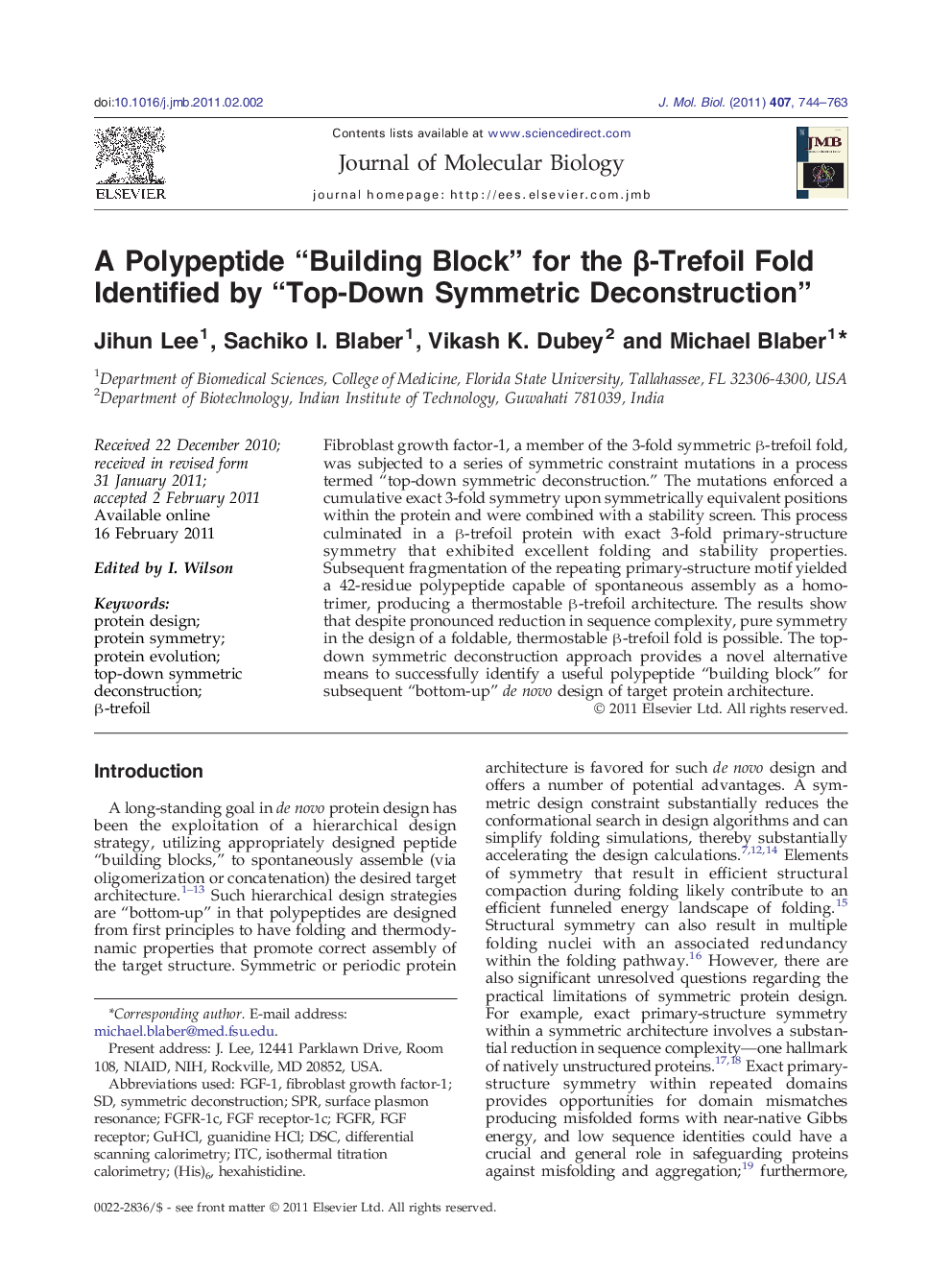| Article ID | Journal | Published Year | Pages | File Type |
|---|---|---|---|---|
| 2185219 | Journal of Molecular Biology | 2011 | 20 Pages |
Fibroblast growth factor-1, a member of the 3-fold symmetric β-trefoil fold, was subjected to a series of symmetric constraint mutations in a process termed “top-down symmetric deconstruction.” The mutations enforced a cumulative exact 3-fold symmetry upon symmetrically equivalent positions within the protein and were combined with a stability screen. This process culminated in a β-trefoil protein with exact 3-fold primary-structure symmetry that exhibited excellent folding and stability properties. Subsequent fragmentation of the repeating primary-structure motif yielded a 42-residue polypeptide capable of spontaneous assembly as a homotrimer, producing a thermostable β-trefoil architecture. The results show that despite pronounced reduction in sequence complexity, pure symmetry in the design of a foldable, thermostable β-trefoil fold is possible. The top-down symmetric deconstruction approach provides a novel alternative means to successfully identify a useful polypeptide “building block” for subsequent “bottom-up” de novo design of target protein architecture.
Graphical AbstractFigure optionsDownload full-size imageDownload high-quality image (166 K)Download as PowerPoint slideResearch Highlights► Sequential symmetric constraint mutations applied to FGF-1 produced a 3-fold symmetric primary structure. ► The 42-residue repeating peptide motif spontaneously assembles as a homotrimer to produce a β-trefoil fold. ► This novel approach provides an alternative strategy to the design of peptide “building blocks” for the de novo protein design of symmetric protein architecture.
